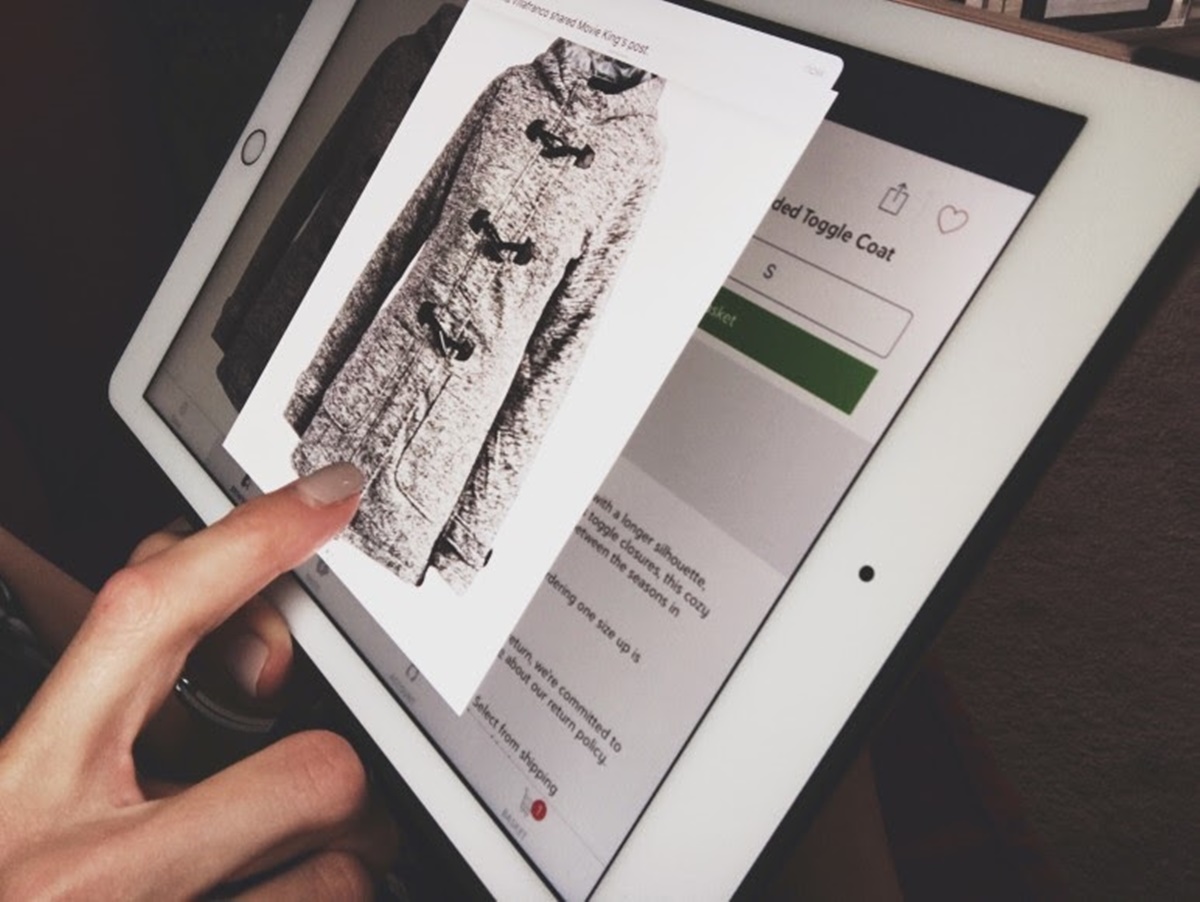What is Merchandising? 7 Strategies to Boost your Sales
It seems obvious that getting your target customers to step foot in your retail store, or to click over to your e-commerce website is not an easy task.
And, of course, there is no guarantee that everybody who comes to your store will end up making a purchase. While the average conversion rate of brick-and-mortar stores hovers around 22.5%, the figure for online shops is just about 3%.
When there are a variety of factors influencing each individual’s decision to make (or not make) a purchase, today we’ll focus on merchandising. In this article, we’ll:
- Explain what merchandising is
- Discuss the importance of effective merchandising
- Clarify 5 different types of merchandising
- Define the advantages and disadvantages of merchandising
- Dig into 7 merchandising strategies to boost your sales.
Let’s get started!
What is Merchandising?
First of all, merchandising is known as the activity of selling products and goods, or of trying to sell them, by advertising or displaying them. When talking about merchandising, we mean products available for sale, typically in a retail setting.
Merchandising includes the determining of quantities, setting prices for products and services, creating display designs, developing marketing and promotional strategies, and offering discounts or coupons to maximize sales.

Cycles of merchandising are different and specific to cultures, climates, and seasons. Therefore, merchandising requires careful planning of displaying the right merchandise at the right time, at the right place, in the right quantity, as well as, at the right price to ‘tow’ more and more potential customers.
The importance of effective merchandising
Believe it or not, effective merchandising can lead to a higher average order value, customer retention rate, and overall lifetime value. Just think about it: If your customers enjoy their experience in your store or on your site, they’ll be more aware of everything you have to offer them. As a result, there’s little to no doubt that they’ll continue to do business with you for a long time to come.
So, effective merchandising can contribute a lot to your business success. Many experts agree that effective merchandising is essential because it offers:
- Variety. Merchandising can show your customers a wide range of products you have within your store, so they can freely choose from.
- Product placement. With an excellent merchandising strategy, you can place different products within your customer’s reach, both on and offline, for them to buy.
- Promoting. Having the right strategies to promote products in a specific area in-store or on your website means that people will be willing to browse.
Typical types of merchandising
In both physical and digital stores, a wide range of merchandising techniques is used to arrange products, communicate their values, and create a valuable customer experience.
Many disciplines fit under the umbrella of merchandising, and as a matter of fact, there are a variety of merchandising types. These include, but are not limited to the following.
Product merchandising
Product merchandising consists of all promotional activities used to sell a product. This type refers to both physical or online products. For example, the concept of product merchandising applies whether you are selling shoes offline or online, and even if you are selling non-physical products, such as ebooks.
Also, because product merchandising involves both in-store and digital, it includes all promotional activities that take place in stores (e.g., shelf displays, end caps) and online (e.g., web design, on-site search).
Visual merchandising
Visual merchandising can be understood as all activities related to displaying the product to highlight its appearance and features. When it comes to physical store experience, visual merchandising contains aspects such as space availability, color palette selection, lighting, product and banner alignment, and more.

In regards to digital space, vibrant colors, web design, the use of images, videos and GIFs, and other visual design elements are used to highlight the features and benefits of the product.
Retail merchandising
Retail merchandising strictly refers to all promotional and marketing activities that contribute to selling products to customers in a physical or brick-and-mortar store. This type is limited to the physical stores, but it can be applied to a variety of venues, from traditional malls to annual pop-up events.
Digital merchandising
Unlike retail merchandising, digital merchandising involves all promotional activities used to sell a product online. Often called as e-commerce or online merchandising, digital merchandising is becoming more popular in this modern age.

Digital merchandising includes all activities like digital product display, website promotion, email marketing, social media marketing, digital marketing, and more. Many entrepreneurs are taking their business online in order to reach a broader audience.
Related topics:
- The Ultimate Guide to E-commerce Email Marketing
- What is Social Media Marketing? Why Social Media Marketing is a Must for Business?
Omnichannel merchandising
The concept of omnichannel merchandising is quite simple. It involves integrating each touchpoint and channel to offer customers exactly what they need, the moment they need, anywhere they are, and on any device. The purpose of this type is to provide shoppers a unified experience across all these touchpoints and channels. There has been tremendous growth in omnichannel merchandising thanks to the emergence of the Internet.
For example, if a retailer sells his products through a physical store, e-commerce website, and mobile app, he will try to provide a seamless customer experience to his audiences. And that’s called omnichannel merchandising.
Merchandising can be of various types, depending on the choice of retailers, space availability, and the kind of merchandise to be sold. So, it requires business owners to think and plan carefully before selecting a suitable merchandising type.
Advantages and disadvantages of merchandising
We all know that merchandising is necessary for companies, but it does have some pros and cons that need your consideration.
First, let’s have a quick look at some advantages of merchandising.
- Attract more customers. People get attracted by the displays they see outside and will enter the store to look further. Your merchandising techniques can keep them stay longer, and make them put money out of their wallets.
- Boost sales. Pricing, displays, product packaging and arrangement, and promotional marketing can improve the shopping experience for customers, and eventually drive business sales. Strong merchandising helps move more of your best-selling products, giving you a way to make more money as your goods fly off the shelves.
- Create a well-kept and well-managed space. An effective merchandising strategy, from outside to inside, gives you a more flexible space, and you can use this space to handle more traffic efficiently. If you keep the space in your store simple and easy to navigate, your customers will find it convenient to look for the products they need. In this way, you make their shopping a pleasing experience.
However, merchandising can come with some limitations as below.
- Cost money. Merchandising is not a cheap process. You will need to invest in planning, hiring staff, buying material, and lots of other expenses. Although effective merchandising ensures you more profit, you will have to bear all the expenses initially.
- Require continuous updates. Merchandising needs changing constantly depending on the climate, season, and festival. You can’t be done with merchandising by implementing it once. Small businesses will find it challenging when they have limited budgets, and they can’t afford to hire more staff as well as experts to design an effective strategy.
- Increase demands on staff. The success of your merchandising techniques may bring back more customers, sales, and deliveries. This leads to more customer service issues, longer working hours, and the need for more staff.
7 merchandising strategies to boost sales
To help keep people stay in your store (and convert them into paying consumers), we’ve put together several expert-backed tips and insights on merchandising. Go through the following pointers and see how you can apply them to your retail store.
1. Speak to your customers
In the age of digital and online shopping, customers can buy anything with just a few clicks, and they don’t even have to step foot in physical locations if they don’t want to. But why do many people still prefer going to stores? The main reason is that they want to interact with products by seeing, touching, feeling, and trying out items.

So, by speaking to your customers and understanding their actual wants and needs, you will know which channels and touchpoints need focusing on. You can do this by conducting syndicated market research, sending emails, chatting online, or having a face-to-face conversation with them.
2. Keep things fresh
As mentioned earlier, you need to keep updating your merchandising strategies to attract more customers and win in the competitive marketplace.
In your physical store, you should change your product displays regularly to keep customers interested. Focus on the displays in your storefront and change them up to highlight new and seasonal products once a week. Plus, one more important thing is to make your window display speak up. Make sure you’re showcasing popular, timely, and interesting products.

It will help a lot if you stay on schedule by using a merchandising calendar. Most experts suggest that business owners would change in-store displays once a week, and window displays at least twice a month. However, you can do these things more often if you’re in a high-traffic location or in the middle of a busy shopping season like the end-of-the-year holidays.
Keeping things fresh is also applied to your eCommerce store. Push your latest and popular items anywhere attractive and easy-to-see on your website.
3. Implement cross-merchandising
Cross-merchandising is known as the act of presenting together multiple products that are related in some way, either on display or for purchase, in order to promote the purchase of all of the items in one exchange.
Effective cross-merchandising requires you to think about what your customers really want to get from using your products in the first place. After that, you can create suitable product displays allowing you to reach this goal.
To implement effective cross-merchandising, put yourself in your customer’s shoes. For example, if you were a customer looking at a particular dress, is there anything in the store that would go well with it?
Here’s a cool example from Target that helps you learn something. The top shelf showcases multiple brands of sunblock for kids, while the shelf directly below has swim diapers. Target understands that parents shopping for swim diapers will likely need sunscreen (and vice versa), so they cleverly put these products together.

4. Implement “try before you buy”
Consumers love seeing products, touching them, and trying them first, so offering samples will never disappoint you. For example, if you are selling skincare products, implement “try before you buy” strategy by giving them samples of the latest face oil or serum products with their orders.

Not only will this help you promote customer value by encouraging them to discover new products, but it increases the number of customers returning to your store as well.
5. Utilize social media
There is no doubt that social media plays a vital role in merchandising. Utilizing multiple social media platforms provides opportunities for your business to raise your voice and engage with potential customers.

Social media channels can be used to drive consumers to your product websites and increase purchasing capabilities. Besides, there are paid advertising options on most platforms, which allows you to reach a large pool of audiences that are interested in your products.
Although social media may not result in an instant flood of cash or a “viral” moment you’re expecting, there are many things it can do for your brand both in the short and long term.
6. Apply high tech
More and more retailers are using high tech in their stores to get a competitive edge. In-store technology can promote the in-store experience and encourage customer engagement. For instance, many stores place tablets to offer more product information and help buyers choose the most appropriate items.

By applying high tech in stores, retailers can interact with customers in different ways, such as providing guided shopping, audio and video content, the ability to connect with social networks, newsletter sign-up, and customer surveys - all will help the brand stay connected with its customers.
Although many retailers are adopting this in-store technology, they’re just touching the surface of its potential. Hence, if you know how to seize this opportunity, you will stay ahead of the game.
7. Train your employees
Staff training is crucial for even the smallest retail enterprise. Of course, you want your staff to be professional, and up-to-date on all of the merchandise you sell. Besides, you would like to give them best practices that improve sales and reduce common security issues like inventory theft. This is where your business training programs involve.

Before organizing those programs, you should carry out a quick survey on which methods your employees prefer, such as technology-based training, on-the-job training, or group discussions & tutorials. Besides, you should ask about their expectations after the training course. According to that piece of information, you can design your training program in a proper way.
Conclusion
So, you’ve reached the end of this guide. In this article, you’ve learned everything about merchandising, including the definition, importance, different types, advantages and disadvantages, and especially 7 merchandising strategies to skyrocket your sales.
Merchandising is an essential and interesting topic for every business. Therefore, feel free to share your opinions in the comment box below about anything relating to merchandising. As usual, we’re always willing to discuss it with you!
New Posts






